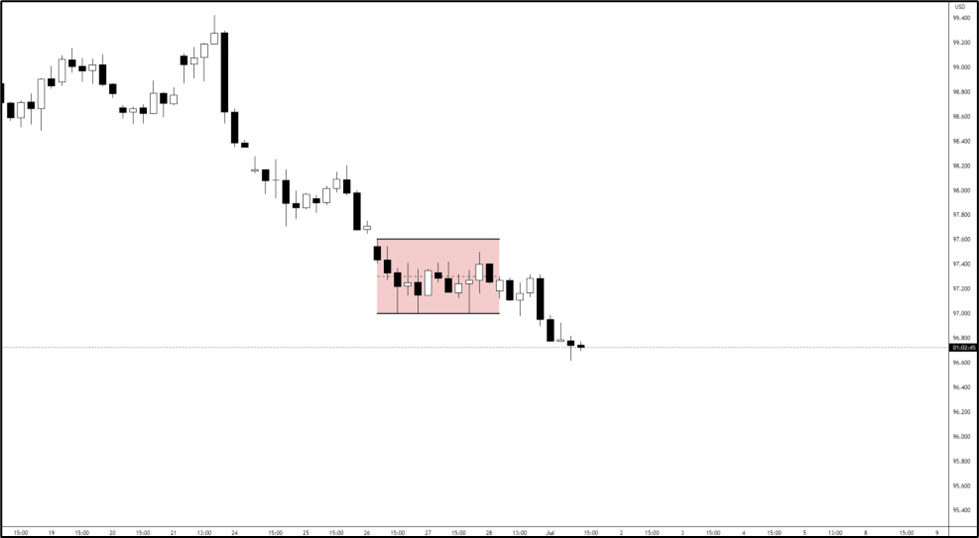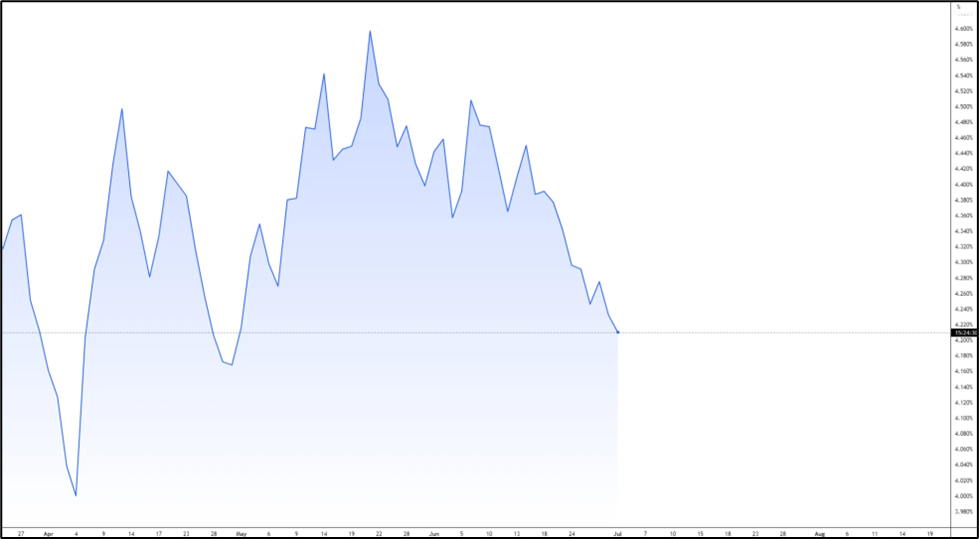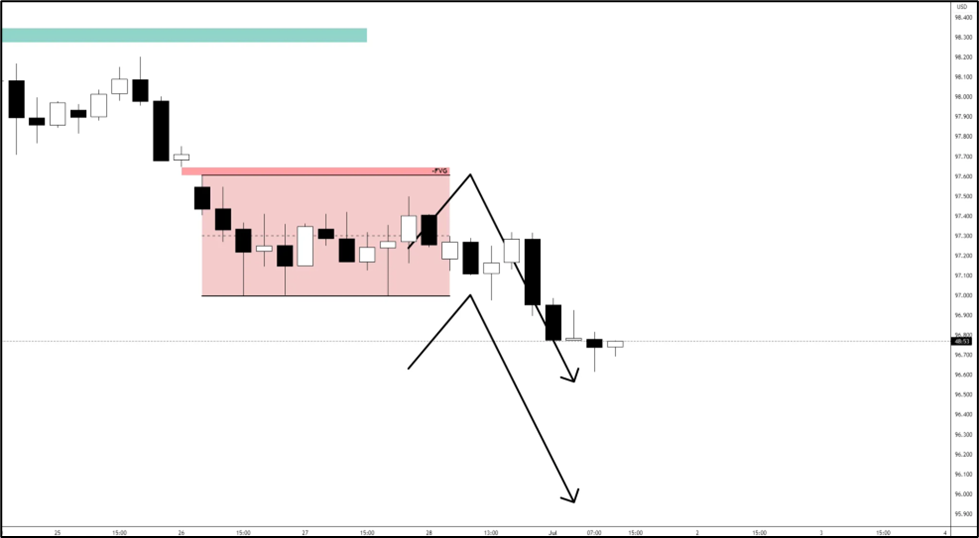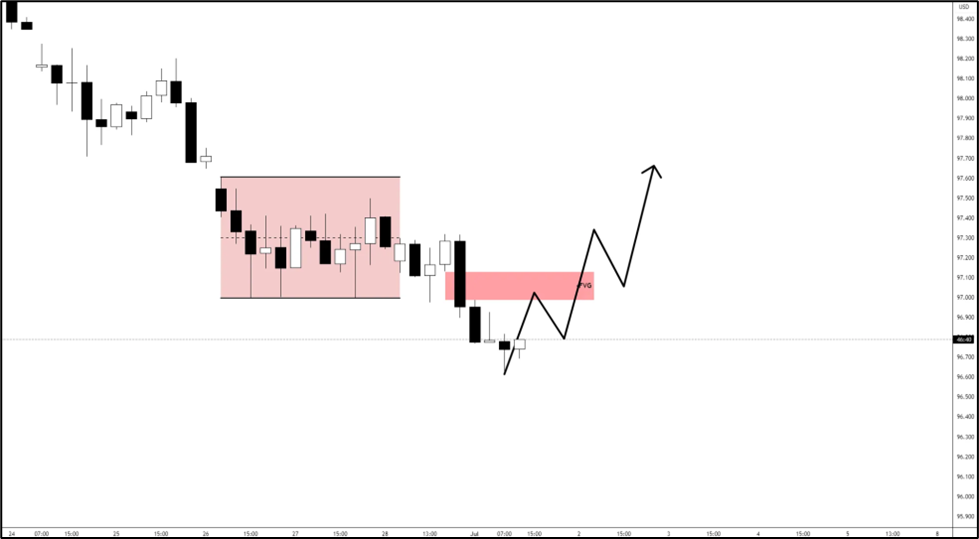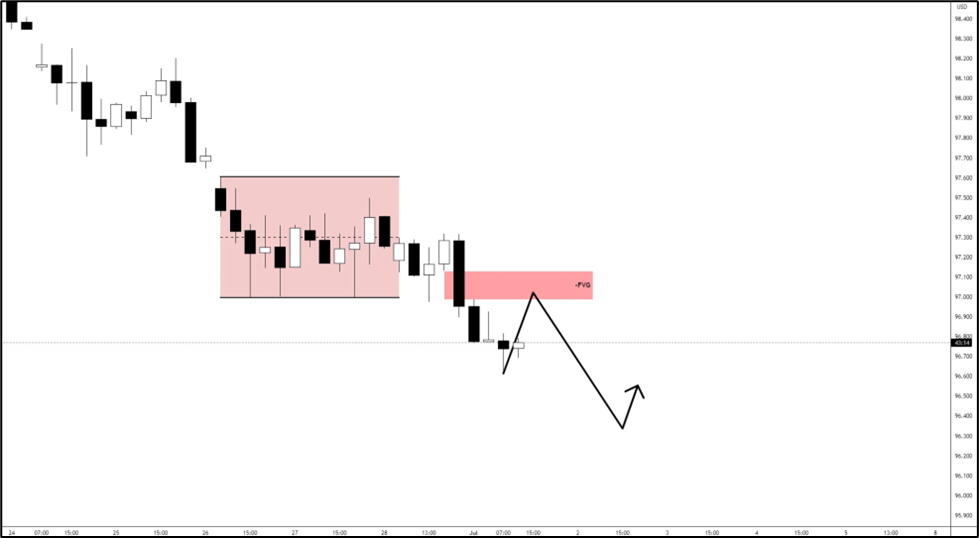The U.S. dollar is facing pressure from all sides—dovish Fed bets, geopolitical chaos, and growing trade war anxiety.
Market stress grows as the Dollar loses its edge
The U.S. dollar has been struggling to find footing amid a wave of macro and political crosscurrents that have shaken risk sentiment but failed to lift the greenback. Traditionally seen as a safe haven, the dollar is now being weighed down by a rising probability of interest rate cuts, even as geopolitical instability increases.
Rate cut incoming
With a September rate cut now priced in at 75%, the U.S. dollar faces renewed downside risk – not just in the coming days, but potentially over the weeks ahead. As the greenback struggles to hold its ground, its grip on a meaningful recovery continues to weaken.
Fragile ceasefire, fragile Dollar
The recent ceasefire announcement between Israel and Iran did little to calm global markets. Violations from both sides have kept risk-on sentiment muted, and safe-haven flows – normally a benefit to the dollar – have become fragmented.
Why? Because the real driver of USD weakness isn’t just geopolitical – it’s the Fed.
Bond yields drop with fragmented USD
President Trump continues to put public pressure on the Federal Reserve to lower interest rates. Combined with fears over global trade instability – especially the looming U.S.–China tariff deadline on July 9 – markets are now pricing in an increased likelihood of policy easing.
What’s weighing on the Dollar?Ceasefire violations keeping volatility high – but not enough to fuel USD demand.Trade tensions with China reigniting ahead of key tariff deadlines.Bond yields dropping on rate cut speculation, dragging USD with them.Technical outlook
In the previous analysis – Dollar, majors, indices and Gold gameplan for this week – the bearish scenario for the dollar is beginning to play out. Ongoing geopolitical tensions between Israel and Iran continue to weigh on sentiment, while the greenback’s failure to form bullish market structures signals that a sustained recovery remains unlikely for now.
Bullish scenario
The bullish scenario has a high chance of not materializing since:No strong bullish structure yet (new higher highs & lows).NFP data is yet to be released (a positive print could lift USD).Breakout above: 97.00-97.20 level up-to 97.40.
Targets:
Bearish scenario
With the Fed weighing down on the greenback, downside risk is still high for the U.S. dollar. Dollar would likely proceed for further downside if:
The 4-Hour Bearish FVG holds resting between 97.00-97.20NFP print is fragile regardless of resultTariff tension arises
Targets:
Dollar impact on majors
Currency Pair
Forecast
Key Drivers
EUR/USD
Bullish
USD weakness, ECB relatively less dovish
GBP/USD
Bullish (Cautious)
USD softening, but BOE uncertainty remains
AUD/USD
Bullish
Risk-on flows, gold strength, China stimulus optimism
NZD/USD
Bullish
RBNZ firm, USD weakness, risk sentiment improving
USD/JPY
Mixed to Bearish
USD weakness vs ultra-dovish BOJ, falling U.S. yields
USD/CAD
Bearish
Oil strength, CAD resilience, softer USD
USD/CHF
Bearish
Safe-haven CHF demand, SNB less dovish than Fed
Is the Dollar’s safe-haven status fading?
Historically, the dollar performs well in times of global turmoil. But this time, its role is less clear.
Unless the Fed signals a hawkish pivot or data comes in stronger than expected, the dollar may remain capped, if not drift lower.
The U.S. dollar isn’t collapsing – but it’s clearly under pressure. Between Middle East volatility, U.S.–China trade friction, and growing expectations of Fed rate cuts, the greenback is no longer the easy flight-to-safety trade it once was.

